Japan, Off The Beaten Path (2) - In Search Of Plum Blossoms, North And South

“Japan, Off The Beaten Path” is a travel essay series by Susan Spann, author of the Hiro Hattori mystery novels. This time she tells us about the plum blossoms she encountered on her trips - delicate heralds of spring that left a lasting impression.
In Japan, plum blossoms mark the approach of spring. For centuries, people have turned their eyes to the ume (plum) trees, eagerly awaiting the arrival of the delicate blossoms whose appearance means another long, cold winter has come to an end.
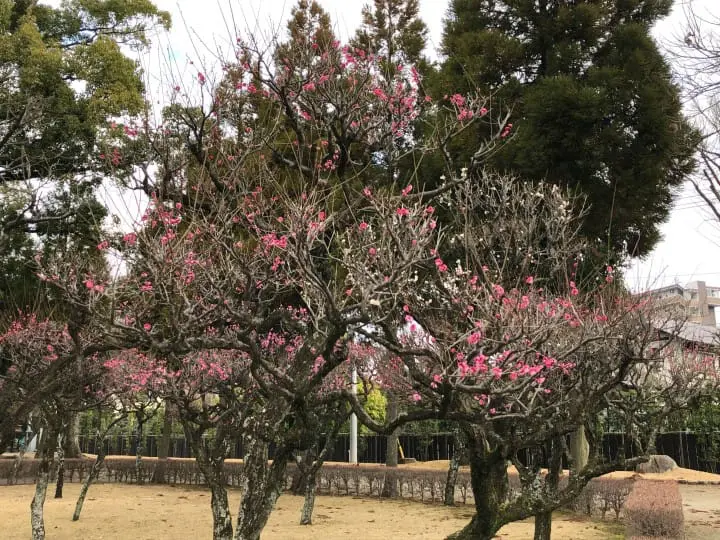
This January marked the end of my first full winter in Japan, and like everyone else, I waited—somewhat impatiently—for the blossoms to appear. In Tokyo, ume bloom in mid-February, and last until early March. However, my first plum blossom-sighting of the year occurred much earlier, and by surprise.
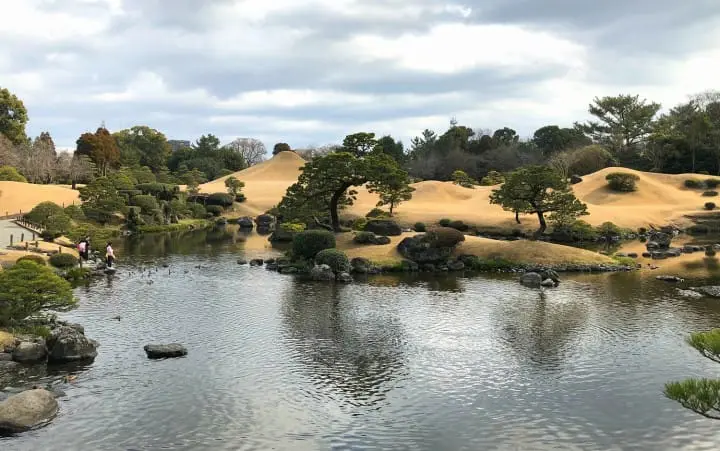
In January I traveled to Kyushu to climb mountains and do research for my next novel. While there, I decided to spend a morning at Suizenji Jojuen in Kumamoto. Suizenji is a landscaped garden located on the former grounds of a Buddhist temple established in 1632 by samurai lord Hosokawa Tadatoshi, the former ruler of Kumamoto.
Tadatoshi’s grandson, Tsunayoshi, expanded the temple garden, which features a pond, hills, trees and stones to recreate the famous 53 stations of the Tokaido, a famous road that once served as a primary travel route connecting Kyoto with Edo (now Tokyo).
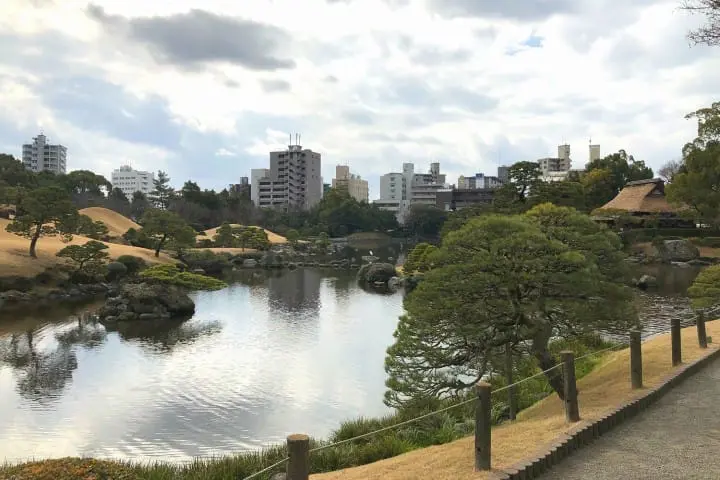
The day I visited, winter had transformed the garden into an austere landscape dominated by somber shades of gray and brown accented by the greenery of carefully-manicured pines. As I strolled around the lake, the sun peeked out from behind the clouds. Sunlight sparkled on the water as a gentle breeze suggested spring might not be far away.
I continued my walk around the lake, heading for the largest of the man-made hills—a miniature Mt. Fuji—but as I approached the mini-mountain, a splash of vibrant color caught my eye.
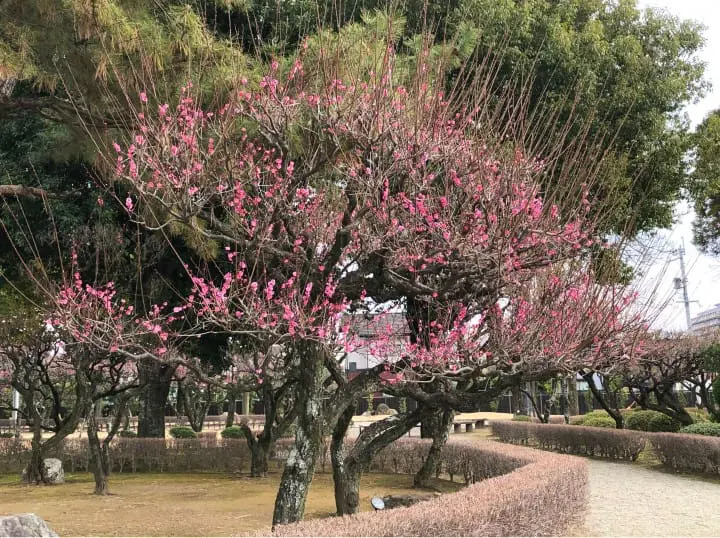
Just behind the hill, that splash became a sea of pink: a grove of plum trees, unexpectedly in bloom.
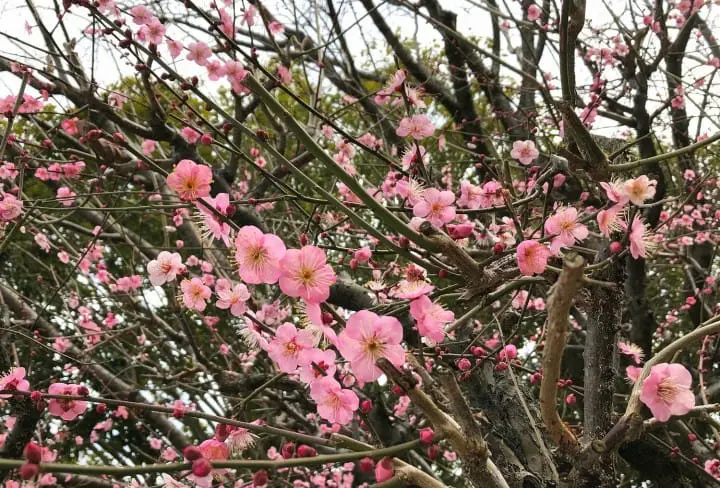
I had heard that different species of ume had differently-colored blooms, which ranged in hue from pristine white to deep, rich red, but I hadn’t expected the blossoms to be so brilliant.
I stopped and stared, finally understanding why so many Japanese poets felt the need to compose a verse in honor of these delicate flowers, the first to bloom at the end of a freezing winter.
They seemed almost magical, especially because their presence came as a surprise.
Upon my return to Tokyo, I heard about another, less-famous ume grove three hours to the north, in Ashikaga City. There, on the side of Mt. Orihime, 1,200 plum trees grow in a grove called Seikeien.
It’s possible to reach the grove by car or bus, but I planned to go on foot, because I’d heard a narrow path connected the park to the larger Tochigi Prefectural Hiking Trail.
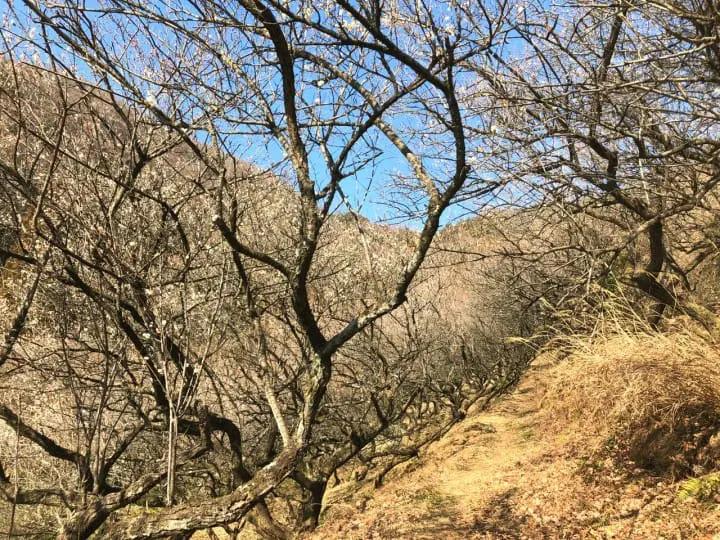
On the morning of my hike, I rose at dawn and hopped a taxi to the trailhead at Gyodosan Ryoanji, a Buddhist temple established in 712 on the slopes of Mt. Gyodo (Gyodosan). More than 30,000 carved stone Buddhas line the pilgrim trail that winds up and over the mountain’s summit, and though I saw no ume trees along the route, the many pines and maples on the mountainside offered abundant shade.
The morning air felt warm for February, and I quickly shed my winter coat—the first time since October I climbed without it.
Hiking in a T-shirt underneath a clear blue sky, I felt like spring had actually arrived, and I hoped the ume trees at Seikeien would be in bloom.
After climbing Mt. Gyodo, and then neighboring Mt. Ryogai, I hiked right past the little trail that led to Seikeien, and didn’t realize my mistake until I’d hiked all the way to Ashikaga Flower Park—almost two kilometers farther down the trail.
I considered calling the whole thing off, but couldn’t bear the thought of going home without seeing the ume trees again, so I turned around and re-traced my steps back up to the summit of Mt. Ryogai, grumbling that I hoped the flowers would be worth the trouble.
Fortunately, this time I found the narrow path that led down the mountainside to Seikeien. I hurried down it, hoping I wouldn’t get lost again.

Gnarled trees grew across the earthen path, their arching limbs forming a tunnel overhead. As I walked beneath them, I felt as if I had wandered into a fairy tale—a feeling that grew stronger when I noticed the pale white blossoms in the upper branches of the trees and realized I had entered the ume grove.
Once again, I stopped and stared.
Unlike the vibrant pink flowers at Suizenji, the ume blooms at Seikeien were pale white and ivory, reminiscent of winter snow—or popcorn—hanging in the trees.
I wandered slowly through the grove, listening to the buzzing of the bees that hovered among the ume and the songs of birds that nested in the trees. The blossoms filled the air with the delicate scent of apricots, and the fragrance made my heart feel unexpectedly light and joyful.
When I returned to Tokyo that night, I felt a little sad, knowing the beautiful ume of Kyushu and Tochigi were too far away for me to see again before they vanished for another year. Their fleeting nature is an important part of their beauty, but I still wished I could see the blossoms one more time.
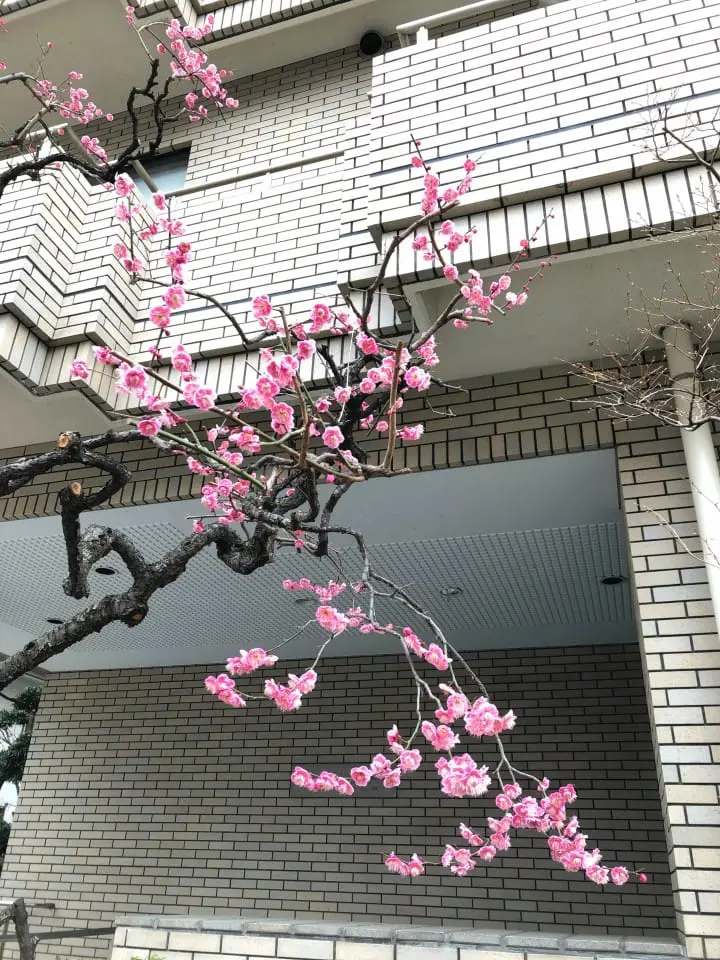
As I left my house the next morning, I noticed a splash of pink near the bus stop just a few yards down the street—an ume tree!
Since moving to Meguro last September, I hadn’t noticed that the neighbors had an ume tree, but its puffy blossoms—halfway between Suizenji’s vibrant pinks and the pale ivory blooms of Seikeien—were a lovely reminder of my ume pilgrimage, and a sign that winter is over and spring has returned to Japan.
Text and photos by Susan Spann
Susan Spann is the author of the Hiro Hattori mystery novels. She lives in Tokyo, but frequently travels across Japan, climbing mountains and seeking adventures off the beaten path. You can find her online at www.susanspann.com.
Susan Spann is the author of the Hiro Hattori mystery novels. She lives in Tokyo, but frequently travels across Japan, climbing mountains and seeking adventures off the beaten path. You can find her online at www.susanspann.com.

































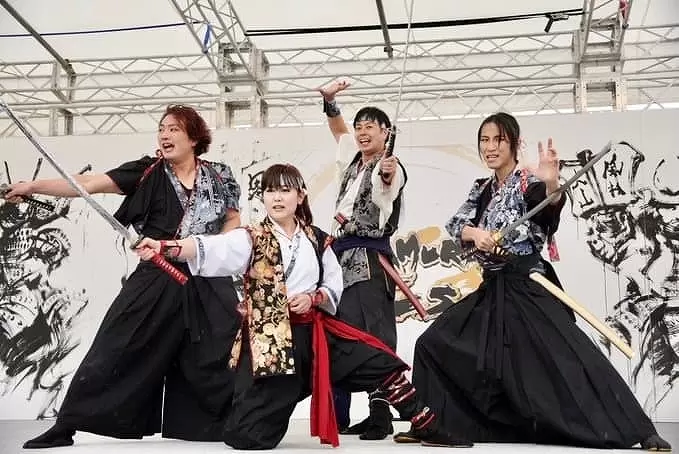









![[30 minutes by train from Nagoya] Feature Articles cherry blossom viewing spots in the tourist destination of Tokoname](https://resources.matcha-jp.com/resize/720x2000/2026/01/08-255150.webp)



![[2026] Top 5 Strawberry Picking Spots in Tokushima, Naruto| Farms and Access Guide for January to May](https://resources.matcha-jp.com/resize/720x2000/2025/03/06-227165.webp)